Our Story
About Us and our farm
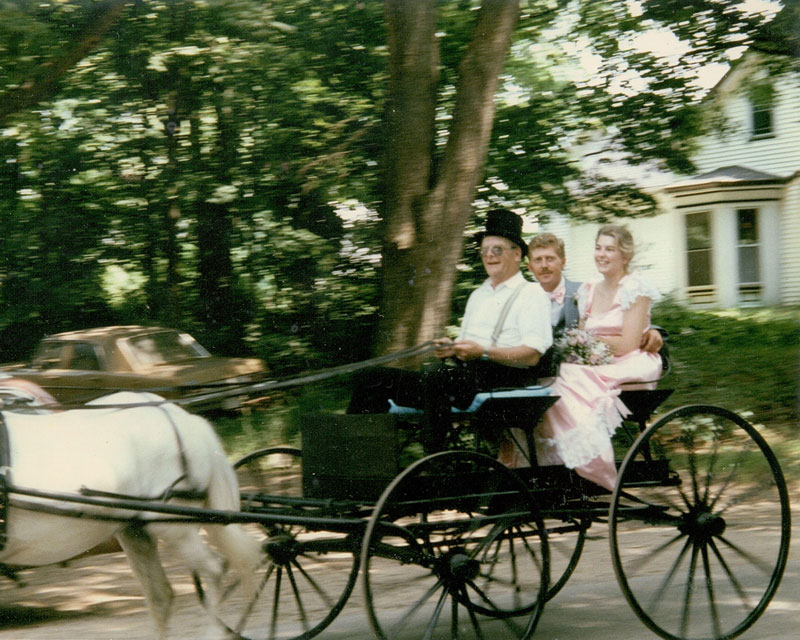
We are Curtis & Gwenn Dexter of Glenmont, Kings County and our goal is to raise superior quality meat goats. From the time we met in 1984, we shared a love for the farming lifestyle, and the hard work that it involves. We had an obviously very traditional wedding, haha, bought 30acres of land on the North Mountain, designed and built an earth-sheltered home and raised two lovely children all the while pursuing our passions with animals. While I (Gwenn) am the major driving force behind this project, Curtis is a willing participant and continually provides valued insights and opinions. We enjoy farming, but also want to provide an income for ourselves as we enter our semi-retirement years. We currently have a herd of goats that we have grown from the original 11 doelings to 30 crossbred does and 2 registered Boer bucks. It is not our intention to grow the herd much larger, maintaining no more than 30 to 40 does and 3 bucks at any one time. We do intend to increase our herd’s productivity as well as the rate of daily gain and dress-out percentage in our meat goat kids while progressing towards a herd of registered full-blooded Boer does, thereby increasing their resale value and their production rates through rigorous and stringent culling. We both work full-time outside the home, and with our own capital and initiative, we have collected a 30 doe breeding stock, purchased two registered purebred Boer bucks, converted our existing 32X24 two story barn into goat housing, added a 12 foot addition to the long side, completed separate housing for two bucks, and installed .5km of perimeter predator-proof fencing as well as purchasing a purebred livestock guardian dog. With additional funding we constructed an additional hay storage facility and installed another 1.5km perimeter predator-proof fencing.
Photos of Our Barn Add-Ons
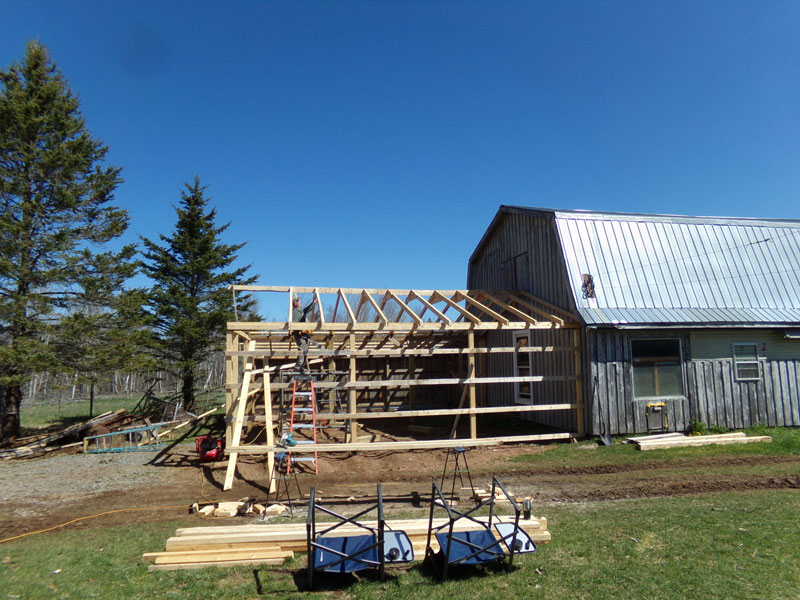
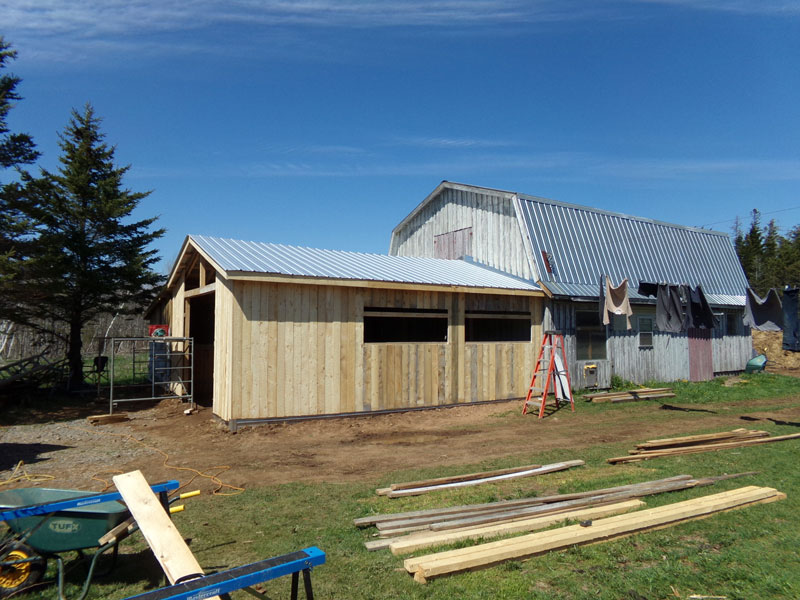
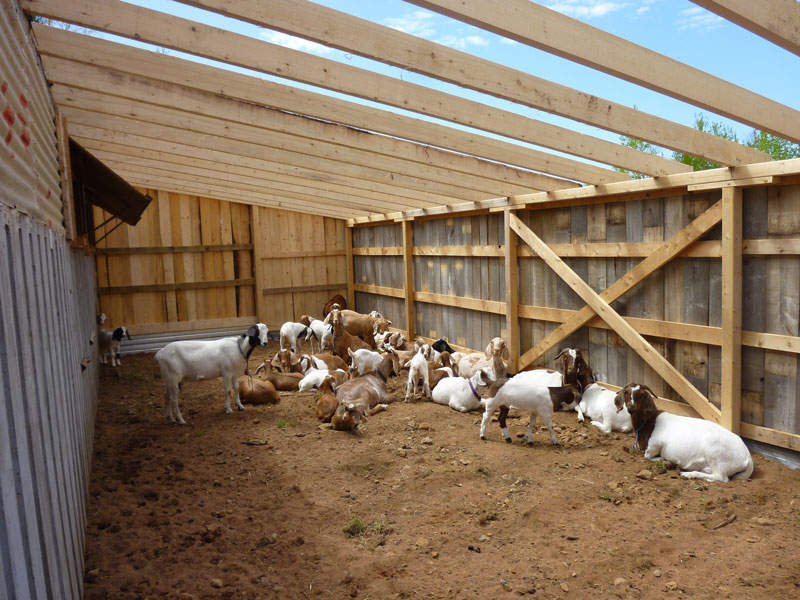
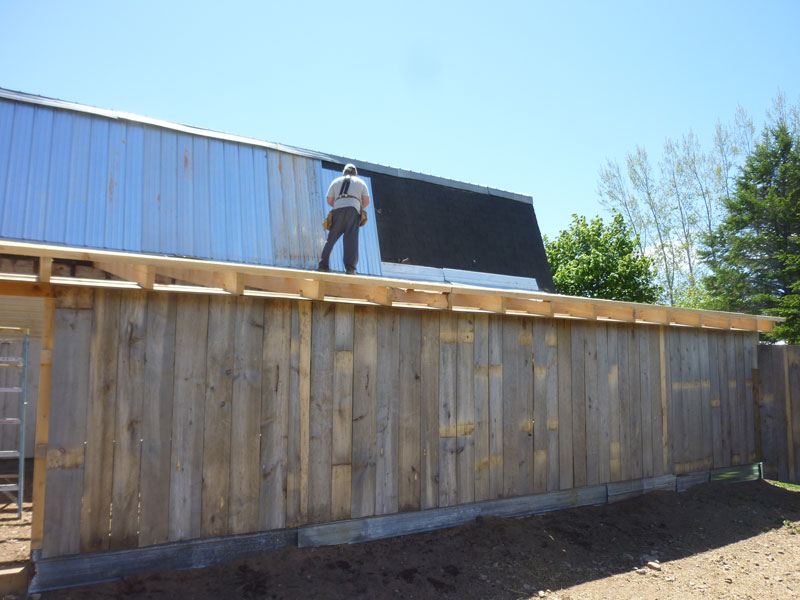
We both have backgrounds in the farming industry and I was an instrumental partner in getting the first licensed goat milk dairy (Forever April) in Nova Scotia up and running over 30 years ago. I have always wanted to get back into goats, but did not want to be tied to twice daily milking, and even then, there was a ready and growing market for meat goats. Curtis has been a construction supervisor for the last 10 years and brings a vast knowledge of construction and renovation to the partnership, in addition to his farming experience.
Over the next 5 years we intend to breed higher percentage, registered Boer does with a continued increased rate of productivity. This will also produce meat kids with an improved rate of daily gain to further decrease expenses, while maintaining high resale values for the resulting overstock. We also plan to be able to provide high quality, herd health tested, replacement doelings to the local market using superior quality Boer bucks imported from other established purebred Boer breeders in Quebec, Ontario, New Brunswick and further west as necessary. We have an already well-established market for our meat kids and cull animals through Oulton’s Meats near Windsor, where they cater to the local and HRM ethnic market. When I was involved with Forever April, I dealt with Mike Oulton; now I deal with Wayne Oulton, his son. Breeding with an eye towards the Muslim holiday calendar is very important to be able to ship kids at target weights without having to maybe hold them over (and feeding them) to the next holiday. Going forward, we are hoping to add word-of-mouth sales as well, by way of our website, Facebook sites and liberal handing out of business cards. Even after 30 years, the demand for goat meat still exceeds supply and frozen imports surpass what is supplied by local producers.
As we enter our sixth year, we are not yet up to full production. We are still retaining the doelings to increase our herd numbers, and reducing costs by; feeding better quality forage, reduced feed consumption, feeding less commercial feed but whole grain from a local supplier instead and increased rotational pasturing. The increased hay storage capacity will enable us to purchase the better quality hay direct from the field and purchase enough at one time to feed the herd for the entire year with consistent quality forage. We also foresee using the empty hay storage in the off season as an extra weaning area for the bucklings. The increased fencing will enable us to incorporate rotational grazing into our program, thereby reducing our worming costs, reducing our feed costs, reducing the amount of hay we need to feed and lengthening our current grazing season. We started using a better weaning program/philosophy after a recent trip to a breeder in Quebec which has resulted in an increased rate of gain over a shorter period for our meat kids, with most reaching the 80-100 lb desired shipping weights in 4-4 ½ months, and thus further reducing feed costs.
Our next project is attempting to have three production cycles per doe every two years.
To be continued…
That First Goat
Gwenn & “Ella Mae Also”
I was 15 years old when I bought my first goat, with my own summer wages. I badgered my parents relentlessly for months and what I really wanted was a horse, so a goat seemed a good compromise from all of our points of view. She was living in a garage in the middle of Port Williams, and I rode in the back seat of that orange Datsun with her, cuddling her all the way home, in what, in a year later would become my own first car.
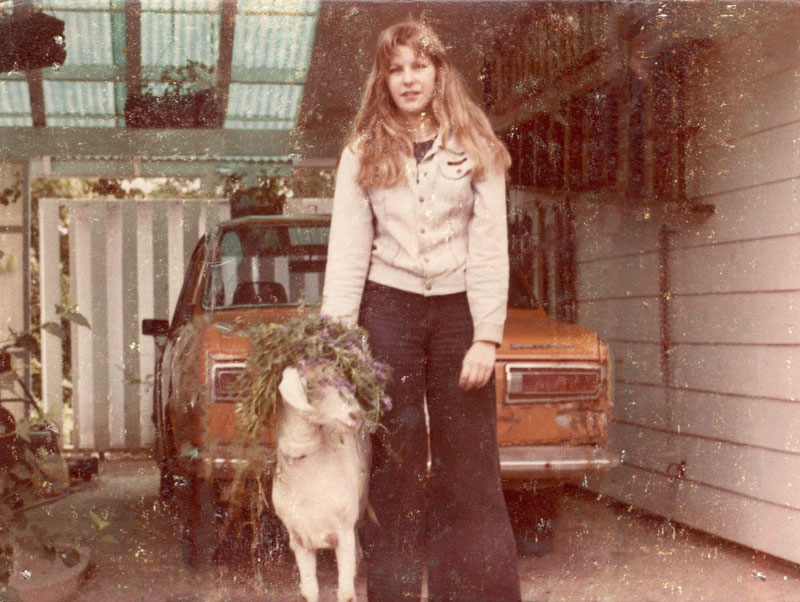
We really didn’t have a proper place to house her, but I had lobbied hard and finally convinced my parents that she would live very happily in the kennels (there was a divider) with our 2 Saint Bernard dogs. And she did; so naturally, I soon had them all living together. She loved jumping on top of the doghouse and leaping off to headbutt the dogs. The dogs ate the goat’s grain if I didn’t watch them, and she munched down on the dog food.
I named her “EllaMayAlso” and thought I was oh so so clever, as there never was a first Ella May, I just liked how it sounded. The five of us went on long rambles across the fields, and my sister and I would decorate the dogs, ourselves and the goat with weeds, leaves and flowers.
The kennel door got left open one day before school, and they all escaped, trying to follow our scent, as we still walked to school. The dogs made it back home from the school, but poor EllaMayAlso was captured by the school principal (they went to the elementary school, I was in high school), tied to the flag pole and the dog catcher was called. I went to do my evening chores and found she was missing. We drove all over town, looking and asking, and finally had to refuel. Those days you had to go in to pay, which was fortunate. One customer came running out as we were leaving, to say it was the funniest thing they ever saw, the dog catcher was driving around with a goat on the back of his truck, too afraid to put it in the kennels for fear of the ruckus that would cause. The dog catcher never did fine me, said he wouldn’t know what to charge for a goat.
EllaMayAlso passed while I was away at college, but I still think of her often.
